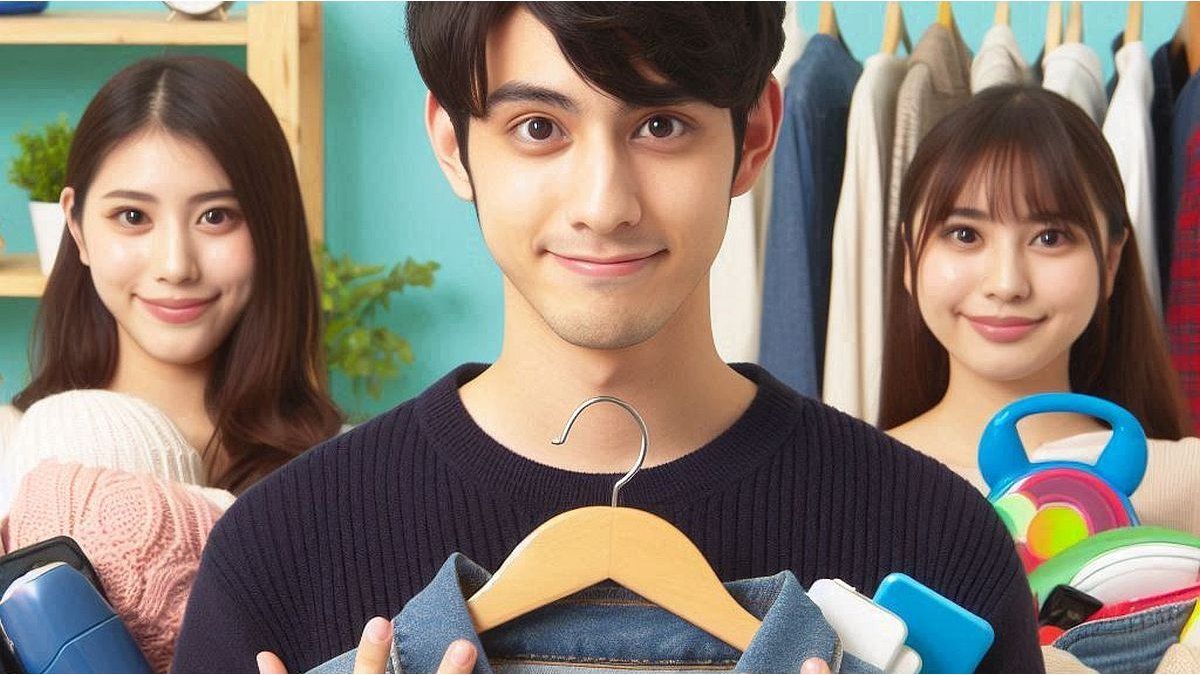It was the straw that broke the camel’s back. On social media, Young people are taking a stand against consumerism, covert advertising and the practice of displaying their purchases, known as “haul”, and are calling for getting rid of the superfluous.
Repair, recycling, frugality and minimalism: the “core of underconsumption” is in fashion in TikTok. These posts encourage a return to simple pleasures and skills, in stark contrast to the type of content that is typically popular on the platform.
“They promote a lifestyle of moderate consumption: instead of having 15 beauty products or 50 pairs of shoes, have only three“explains French digital behaviour analyst Anissa Eprinchard.
At a time when everything has become “consumable, from political discourse to skin care,” this trend indicates “a weariness with content consumerism,” he says.
“When people are constantly trying to sell you something and prices keep going up, you end up suffering from financial exhaustion,” Kara Perez, an American influencer specialising in financial issues and environmental responsibility, told AFP.
“I use natural elements to decorate my apartment, most of my clothes are second-hand… I reuse sauce jars to store food, it’s free and very practical,” says one Internet user in a video posted on Instagram in July.
For Eprinchard, This trend is due to fatigue from “unrealistic routines or indecent hauls.”
This weariness is even more acute in the United States, where young adults are suffering from a rise in prices since the Covid-19 pandemic. Consumers feel “alienated” in an unstable geopolitical and economic context, explains Tariro Makoni, a specialist in the analysis of social and consumer movements.
According to experts consulted by AFP, younger generations are realising that they cannot keep up with the abundance of products being promoted on social media.
In a search for identity, many young people “compulsively” consume disposable and replaceable fashion, British content creator Andrea Cheong, author of a book on sustainable fashion, told AFP.
On her Instagram account, she shows her followers how to style even the most unexpected items in their wardrobe, such as lingerie, and transform a wedding dress into a tank top.
The “core of underconsumption” aims to make the imperfect aesthetic and is part of a search for timelessness that contrasts with the Instagram and TikTok trends that preceded it.
“I’d like it to be more than just a trend,” Cheong says. “For some people, it’s a way of life.”
The experts interviewed note a growing interest in authentic content, moving away from the classic influencer culture that encourages hyperconsumption.
Recycling and conservation “have become fashionable,” says Makoni. “A similar movement was created after the financial crisis of 2008,” she adds.
More and more young people are becoming environmentally conscious, but the main driver of this trend is still purchasing power, says Cheong, who nevertheless sees it as a positive change for the planet.
The content creator believes that by conveying the message of “consume less”, the “core of underconsumption” helps popularize a sustainable, ecologically responsible and accessible approach to everyone. Moreover, this spirit of “underconsumption” extends beyond social media.
In Washington, Anjali Zielinski, 42, and her daughter Mina, seven, recently took part in a darning workshop. Zielinski is aiming to foster her daughter’s creativity, but also to instil in her “the value of things” and “the work that goes into producing them” in a world that she sees as increasingly disconnected from those realities.
Source: Ambito
I am an author and journalist who has worked in the entertainment industry for over a decade. I currently work as a news editor at a major news website, and my focus is on covering the latest trends in entertainment. I also write occasional pieces for other outlets, and have authored two books about the entertainment industry.




